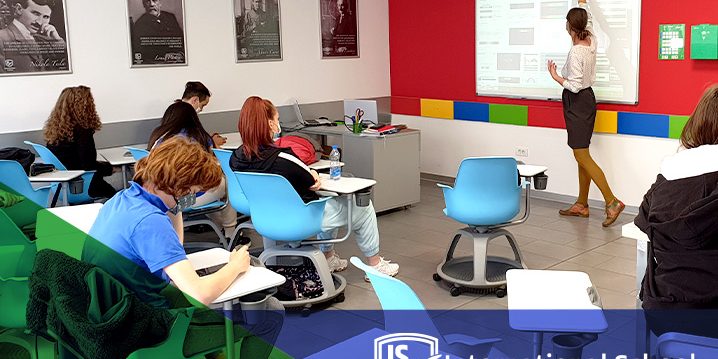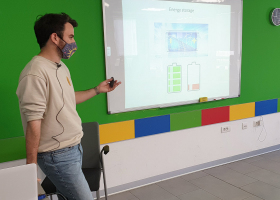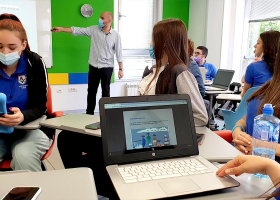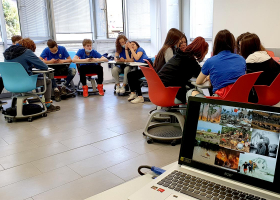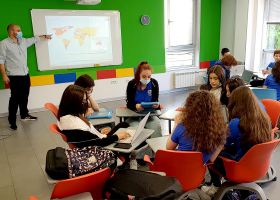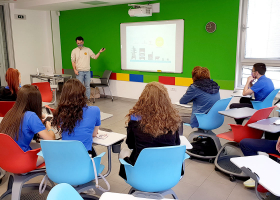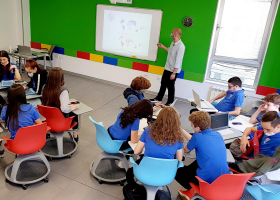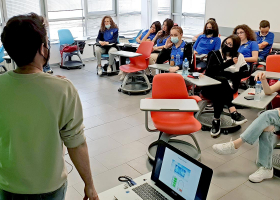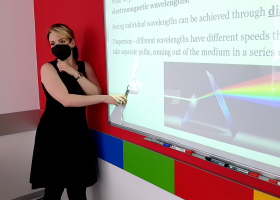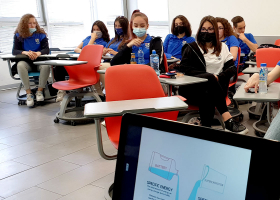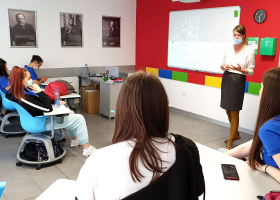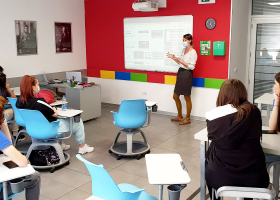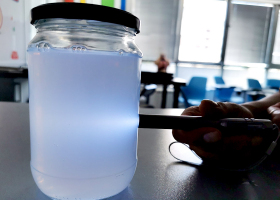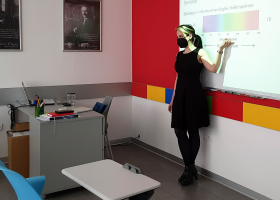Organised for Year 10 students only, Science Fair came right after their Easter break. This year’s hot topic was “Climate Change and Pollution”. The students could see how the most important topic nowadays was explained and described through the lenses of various subjects.
Climate change and wellbeing
Psychology teacher, Mr Aleksandar Petrović, introduced the Fair by talking to students about some unconventional effects of climate change. Besides the direct effects, climate change is affecting mental wellbeing, causing the so-called eco-anxiety. The students showed excellent awareness about climate change causes and how their actions can help our planet.
Guest lecturer showed how to tackle climate change
The students got to meet a scientist – someone who is already fighting climate change by storing sustainable energy and recycling batteries. Petar Laušević, a scientist working at the Centre for Promotion of Science and a researcher at the Nuclear Institute in Vinča, introduced the students to supercapacitors and the material graphene – the leading topics in modern engineering.
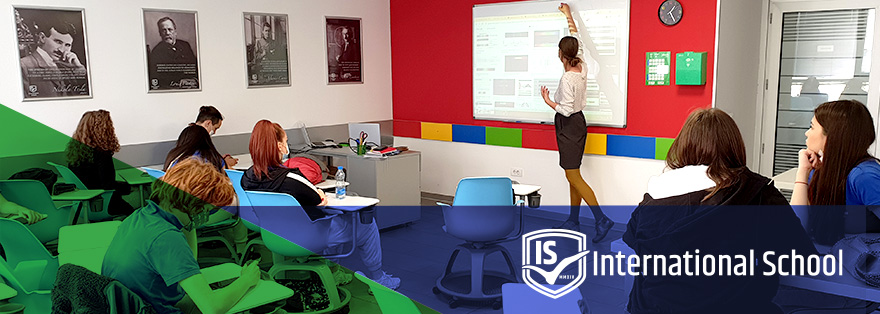
Demonstrating the harmful effects of pollution in Chemistry lesson
During a Chemistry lesson, the students were introduced to major air pollutants that have a negative impact on the climate. They learnt about the causes and effects of global warming, positive feedback loops the pollution triggers, and ways to prevent further damage. Furthermore, Ms Marija Kovački helped the students carry out experiments to demonstrate the harmful effect of pollution and acid rains on natural and cultural heritage.
Light scattering in Physics lesson
Physics teacher, Ms Ana Vlašić, presented the scattering of light in our atmosphere that causes colourful sunsets. As she explained, the scattering is why we perceive the day sky as blue and the Sun as yellow, even though the light coming from the Sun is considered white. Light interacts with the molecules and particles in our atmosphere depending on their sizes, so one way of detecting pollution is observing the colours of the sunset. The students were able to see the scattering of white light in an experiment, as the blue sky was captured in a jar.
Analysing data with Mathematics teacher
The students attended a workshop in data analysis held by a Mathematics teacher. Ms Aleksandra Strugar presented the average temperature data over the past 100 years and the students were taught how to plot graphs and analyse the causes and effects that can be read from their results. Their graphs showed the rising trends in temperatures, which the students connected with the knowledge from previous lectures.
The students enjoyed the day devoted to science. They had an opportunity to express their opinion and hear fascinating facts and science stories on this huge world problem.


